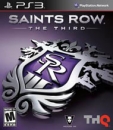Final-Fan said:
1. So what is the point of calling penguin flippers "evolved wings" when they are really just "evolved legs"? Sure, penguin flippers used to be wings. They used to be a lot of things. They're not actually wings anymore. |
"Sure, penguin flippers used to be wings. They used to be a lot of things. They're not actually wings anymore. "
didn't you just agree with me that they are adapted wings?
" Since the process of evolution depends on the gradual accumulation of small changes over a large number of generations, if we go back and back in time the elephant's ancestors eventually start to look a little bit more like the fish's ancestors."
which is not relevant to discussions about the animals in the present day... so what's your point?
" I thought the analogy was pretty fucking clear"
the fact that they have a common ancestor millions of years ago is completely irrelevant to the fact that here in the present day we can tell that there is a clear division between the two groups of animals
"where do you draw the line between elephants and fish and elephant-ancestors and fish-ancestors when there is a continuum of infinitesimally different, almost identical, creatures connecting them?"

i expected better to be honest




















